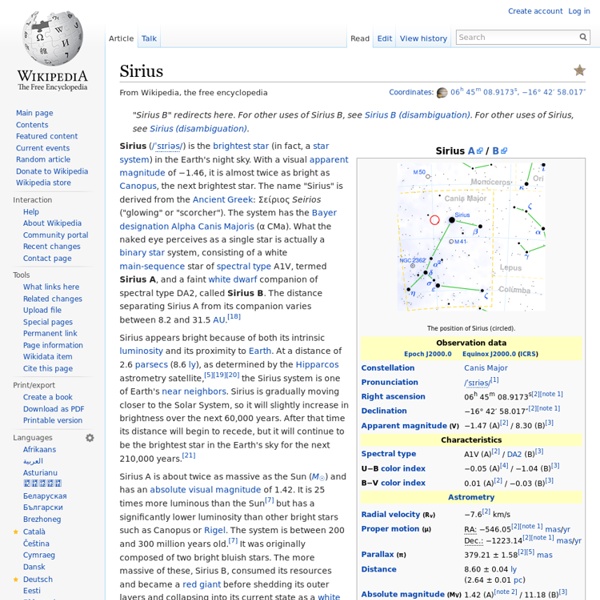Sirius

Messier 41
Messier 41 (also known as M41 or NGC 2287) is an open cluster in the Canis Major constellation. It was discovered by Giovanni Batista Hodierna before 1654 and was perhaps known to Aristotle about 325 BC.[3] M41 lies about four degrees almost exactly south of Sirius, and forms a triangle with it and Nu2 Canis Majoris—all three can be seen in the same field in binoculars. The cluster itself covers an area around the size of the full moon.[4] It contains about 100 stars including several red giants, the brightest being a spectral type K3 giant of apparent magnitude 6.3 near the cluster's center, and a number of white dwarfs.[5][6][7] The cluster is estimated to be moving away from us at 23.3 km/s.[1] The diameter of the cluster is between 25 and 26 light years. Its age is estimated at between 190 and 240 million years old. Walter Scott Houston describes the appearance of the cluster in small telescopes:[8] Many visual observers speak of seeing curved lines of stars in M41. See also[edit]
Canis Major
An image of Canis Major (top right) as seen from an airplane at around 8 degrees north (Andaman Sea west of Thailand). Canis Major contains Sirius, the brightest star in the night sky, known as the 'dog star'. It is bright because of its proximity to our Solar System. In contrast, the other bright stars of the constellation are stars of great distance and high luminosity. History and mythology[edit] In ancient Mesopotamia, Sirius was seen as an arrow, KAK.SI.DI, aiming towards Orion, while the southern stars of Canis Major and a part of Puppis were viewed as a bow, BAN in the Three Stars Each tablets, dating to around 1100 BC. In non-western astronomy[edit] Both the Maori people and the people of the Tuamotus recognized the figure of Canis Major as a distinct entity, though it was sometimes absorbed into other constellations. Canis Major as depicted in Urania's Mirror, a set of constellation cards published in London c.1825. Characteristics[edit] Notable features[edit] Stars[edit]
Related:
Related:



